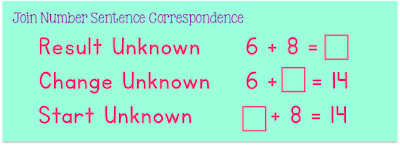Hi friends!! I'm linking up with Schroeder Shenanigans in 2nd and Lucky little Learners for another 2getherwearebetter. I'm sharing about the BIG changes I'll be making in my math instruction next year. Dun dun dun… This summer
I had professional development on Cognitively Guided Instruction and read the
book Children's Mathematics. It was four days long and covered skills I don’t feel like I see all that
much anymore. Algebraic equations, fractions and decimals… huh? I was rusty.
Anyhow, we were able to see this used in real classrooms and some of the
teachers in my area came to share some of their experiences and resources with
us. They even offered to respond to questions we may have. SUPER NICE.
 |
| Click {HERE} to check it on Amazon. |
My
plan is to jump in with both feet. I’m not quite sure how it’s going to work
yet though because 2 new teachers will be joining my team and my veteran teammate
will be out on maternity leave for the first couple of months. Oh, and only one
of my teammates was at the PD. Soooooo… I’m a little nervous because I want to
be able to offer the most support to my team.
So let me go ahead and set aside all of my anxieties, so I can tell you about CGI. For starters, it’s not a program or curriculum.
It’s actually research that “provides a framework for children’s thinking in
whole numbers.” It also explains the development of children’s understanding of
mathematics and shows teachers how to foster it by making math make sense. Why
didn’t I think of that? Of course, math should make sense.
5+3=___, means nothing
to a student who’s just beginning to learn addition. On the other hand, if you
said: “You have 5 stickers. Then your
teacher gives you 3 more stickers. How many stickers do you have now?” A child
should have a better understanding of the problem and be able to solve using a
strategy of his or her choice. For so long, I didn’t understand the
significance of providing my students with context. AHA MOMENT!!
Did you know that there are 3 types of addition
problems? I didn’t! Side note: Addition is referred to as “join” throughout CGI
math.
Each of these problems indicate an action:
Click {HERE} to see ALL problem types.
Another important insight was to stop encouraging
students to search for key words. OOPS! Worst offender here. Key words
don’t always identify a particular operation. I always suggest that “left”
means to subtract, but it doesn’t work in the following problem.
Chris left 2 books at home on Wednesday and 4 books
on Thursday. How many books were left at home?
Want to see it in action? Check out this Alyssa Naatjes' video:
 |
| FREE Join problems |







We studied and implemented CGI in my teacher prep program... I think I need to return to it again and bring it back into my own classroom- when we used it, I found it to be very powerful as well! I'm excited to see how it works in your classroom and to follow your journey with it!
ReplyDeleteKelli
Tales of a Tenacious Teacher
My husband (a principal) and I enjoyed watching the video! I like to see real students in action. Great post Carol!
ReplyDelete